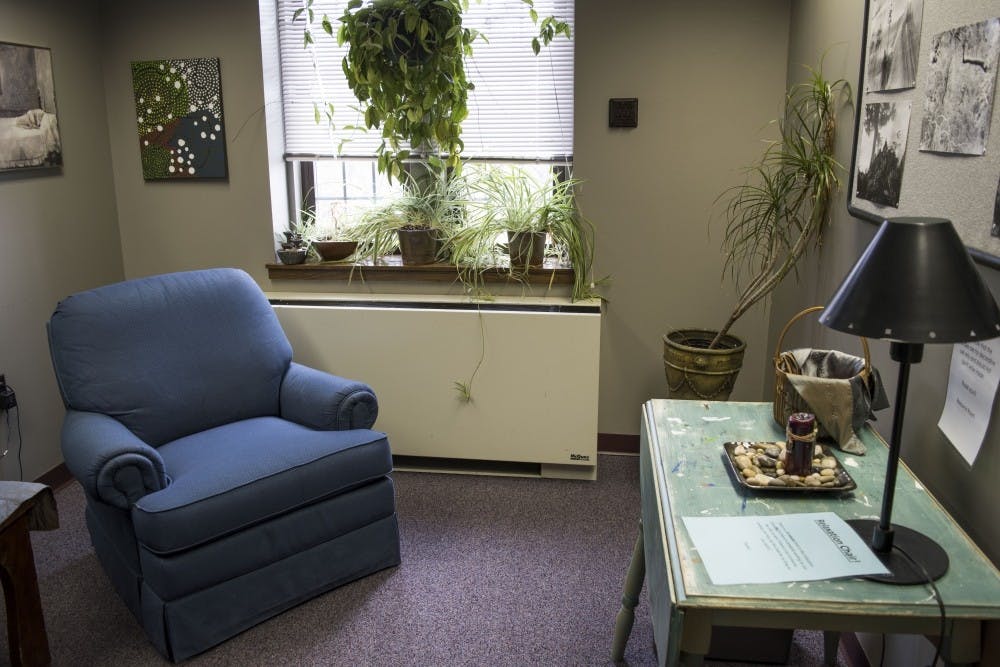When William Betts took over as director of Counseling and Health Services in February 2017, he said the Counseling Center designed a system like “a river” to have a “constant flow” of students.
In retrospect, Betts said “what we really needed to design was a system for a river that floods.”
During the fall 2019 semester, Betts said the center has seen an “enormous increase” in the number of people calling to schedule an appointment — a 40 percent increase from the last academic year. He said the center’s normal yearly increase in calls is 6 percent.
While the center increased its capacity to see students by 50 percent, it has also seen a rise in wait times, Betts said, which aren’t usually long for the majority of the year.
“There was no way to predict this,” Betts said. “We've done everything we can to be as fast as we can. There's just huge numbers of students coming to us.”
Megan Jessup, sophomore sociology major, said she has noticed how long these wait times have become.
After scheduling her initial 60- to 90-minute consultation at the start of the semester, which is used to get a feel for where the patient is at and what therapist will suit them best, Jessup said it took about two weeks for them to find and assign her a counselor.
“I had some issues that were coming up, and I wanted to speak to someone as soon as possible, but it kind of made it difficult because I had that two-week process of waiting,” she said.
When Jessup was finally set up with a counselor, she said the person she was assigned to wasn’t the best fit for her needs as a patient.
“On paper, we might have seemed like a good fit, but in person, I felt like I wasn't getting the support that I really needed,” she said. “While I was giving my background of what I'm doing with what I want to focus on, instead of giving me some on-site tips and advice, the counselor was just like, ‘Oh, that sounds very hard.’”
Another issue Jessup said she had was that she felt “pressured” when she would call the counseling center, because she didn’t want to take up another person’s spot two weeks out.
“I don't want students to feel that they can't go to get help or to speak to someone just because they have to wait two weeks. I think that it's important to discuss whatever you're dealing with,” she said.
The center also advises students to call during emergencies to see if there’s an emergency opening or call a hotline, Jessup said.
In an email, Jessup said she was told in her most recent session that her next meeting would be three to five weeks out, but Betts said only four students have experienced wait times of three weeks or more to be assigned to a therapist.
“Once students have completed their initial appointment, they are assigned to a therapist. This process involves matching students with a therapist based on the student’s needs and matching schedules to make sure the therapist and student are available to meet at the same time. This process can take several days,” he said over email. “Over the course of this semester, most students were matched to a therapist within a week. Again due to the large number of students reaching out to the Counseling Center, these times have started to increase.”
Betts said the “river” design was created to help make spots available every hour for consultations and crises alike.
“We had essentially said, ‘Let's have the opportunity each hour that we're open to have someone come in and get an intake and assessment to start therapy,’” Betts said.
According to a powerpoint Betts presented to the Board of Trustees at Ball State, the average wait time for a student was eight business days in the fall semester and five business days in the spring semester during the 2018-19 academic year.
Betts said the record-breaking 4,000-plus new freshman class isn’t what is impacting the higher number of students visiting the Counseling Center, and there is a “separate trend” that is driving people to counseling — a trend not yet known to the center.
There will always be a limit to what the Counseling Center can do, Betts said, but working with the community and organizations such as Indiana University Health Ball Memorial Hospital can help alleviate some of those problems and help keep at-risk students safe.
Dr. Angela Lykins, a licensed clinical psychologist in Muncie, said she sees both Ball State students individually or with a partner or family members.
Lykins said there is no partnership between her clinic and Ball State and that her practice is “purely private.” She said her clinic helps around 25 Ball State students a year — a small percent of the clinic’s practice.
“We're probably physically the furthest [clinic] from the location of campus,” Lykins said. “If students did not have their own transportation and they just did the bus service, they're probably not going to come to our facility.”
Overall, Jessup said she doesn’t want to “bash on” Ball State’s counseling center because of the “great” work it does and the importance of helping students with mental health issues.
John Lynch contributed to this story.
Contact Charles Melton with comments at cwmelton@bsu.edu or on Twitter @Cmelton444.





